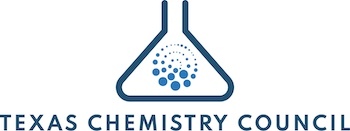Complete Story
05/09/2025
EPA Outlines Steps to Address PFAS Contamination
Chemical & Engineering News | Larry Pearl | May 5, 2025
EPA Outlines Steps to Address PFAS Contamination
The US Environmental Protection Agency on April 28 announced a series of steps it plans to take to address per- and polyfluoroalkyl substances (PFAS).
In a news release, the agency lists 21 actions across three “principles”: strengthening the science, fulfilling statutory obligations and enhancing communication, and building partnerships.
“With today’s announcement, we are tackling PFAS from all of EPA’s program offices, advancing research and testing, stopping PFAS from getting into drinking water systems, holding polluters accountable, and providing certainty for passive receivers. This is just a start of the work we will do on PFAS to ensure Americans have the cleanest air, land, and water,” EPA administrator Lee Zeldin says in the release.
Under its “strengthening the science” steps, the EPA says it will name an agency lead “to better align and manage PFAS efforts across agency programs.” It also says it will “implement a PFAS testing strategy under Toxic Substances Control Act (TSCA) Section 4 . . . [and] ramp up the development of testing methods to improve detection and strategies to address PFAS.”
On the statutory obligations and communications side, EPA plans to establish a clear liability framework for PFAS that operates on the “polluter pays” principle, develop effluent limitations guidelines for certain PFAS, and enforce Clean Water Act and TSCA limitations on PFAS use and release to prevent further contamination. EPA also said it will “address the most significant compliance challenges and requests from Congress and drinking water systems related to national primary drinking water regulations for certain PFAS,” among other actions.
In addition, the EPA announced a series of steps it will take in conjunction with states and others on PFAS, including assessing risks from contamination, advancing remediation and cleanup efforts where drinking-water supplies are affected, and providing assistance on enforcement efforts.
“There will be more to come in the future across EPA’s program offices to help communities impacted by PFAS contamination,” the agency says.
Environmental group reactions were both skeptical and cautiously optimistic.
On the skeptical side, Melanie Benesh, the Environmental Working Group’s vice president for government affairs, says in a statement that the announcement “suggests the Trump EPA will delay efforts to reduce PFAS in our tap water, exempt polluters from reducing and reporting their PFAS releases, fail to turn off the tap of PFAS pollution fouling our air and water, and block states from protecting us from PFAS in our everyday products.”
But John Rumpler, clean water director and senior attorney at the Environment America Research and Policy Center, was less pessimistic. “Some of the initiatives announced by EPA could begin to advance Administrator Lee Zeldin’s stated objective: ‘to ensure Americans have the cleanest air, land, and water,’” Rumpler says in a statement. “These include setting at least some limits on how much PFAS certain industries can release into our waterways, and using our nation’s toxic substances law to restrict the use of these chemicals—hopefully in the strong manner that several states have already done.
“Other steps in the EPA’s announcement—including unspecified adjustments to liability and national drinking water limits—bear careful attention as they are developed.”
The EPA announced stringent new limits last April for six PFAS in drinking water; those limits are being challenged in court. But at the EPA’s request, the US Court of Appeals for the District of Columbia Circuit recently paused two cases to give the agency time to review the drinking-water regulations and a separate regulation designating two PFAS as hazardous substances under the US Comprehensive Environmental Response, Compensation, and Liability Act, commonly known as the Superfund law.
According to the EPA, peer-reviewed scientific studies have shown that exposure to certain levels of PFAS may lead to “reproductive effects such as decreased fertility . . . developmental effects or delays in children . . . increased risk of some cancers, including prostate, kidney, and testicular cancer . . . and reduced ability of the body’s immune system to fight infections, including reduced vaccine response,” among other potential impacts.
The American Chemistry Council (ACC) pointed in particular to EPA’s pledge to designate a lead person on PFAS.
“While we need to learn more about the details of EPA’s announcement, we have consistently advocated for a comprehensive approach to managing PFAS, including for the designation of a point person to coordinate across differing programs and agencies,” ACC says in a statement.
The statement continues: “We support strong, science-based regulations for PFAS chemistries that take into account the differences between them, continue to allow for the many products that they enable, and drive domestic manufacturing. We look forward to engaging with EPA on this important issue.”

